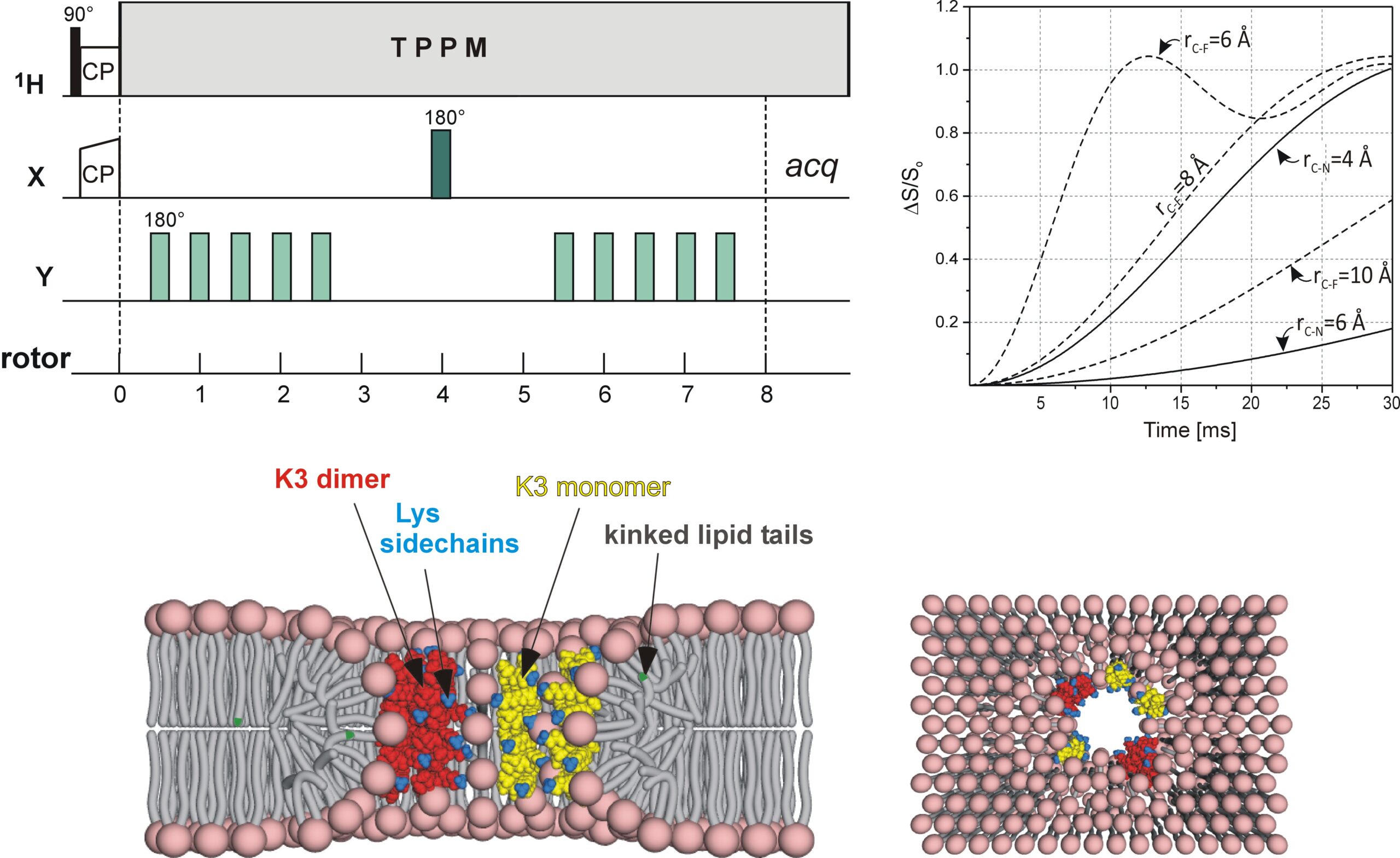Orsolya Tőke
Int. J. Mol. Sci. 2023, 24(17), 13637
Abstract
Solid-state NMR (ss-NMR) is a powerful tool to investigate noncrystallizable, poorly soluble molecular systems, such as membrane proteins, amyloids, and cell walls, in environments that closely resemble their physical sites of action. Rotational-echo double resonance (REDOR) is an ss-NMR methodology, which by reintroducing heteronuclear dipolar coupling under magic angle spinning conditions provides intramolecular and intermolecular distance restraints at the atomic level. In addition, REDOR can be exploited as a selection tool to filter spectra based on dipolar couplings. Used extensively as a spectroscopic ruler between isolated spins in site-specifically labeled systems and more recently as a building block in multidimensional ss-NMR pulse sequences allowing the simultaneous measurement of multiple distances, REDOR yields atomic-scale information on the structure and interaction of proteins. By extending REDOR to the determination of 1H–X dipolar couplings in recent years, the limit of measurable distances has reached ~15–20 Å, making it an attractive method of choice for the study of complex biomolecular assemblies. Following a methodological introduction including the most recent implementations, examples are discussed to illustrate the versatility of REDOR in the study of biological systems.

